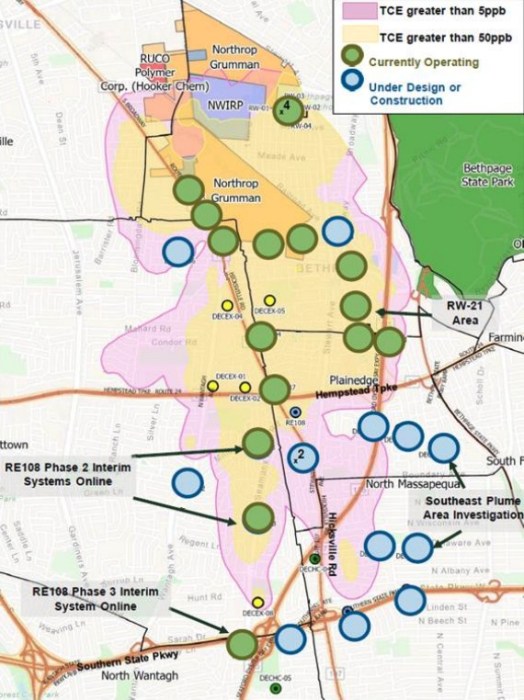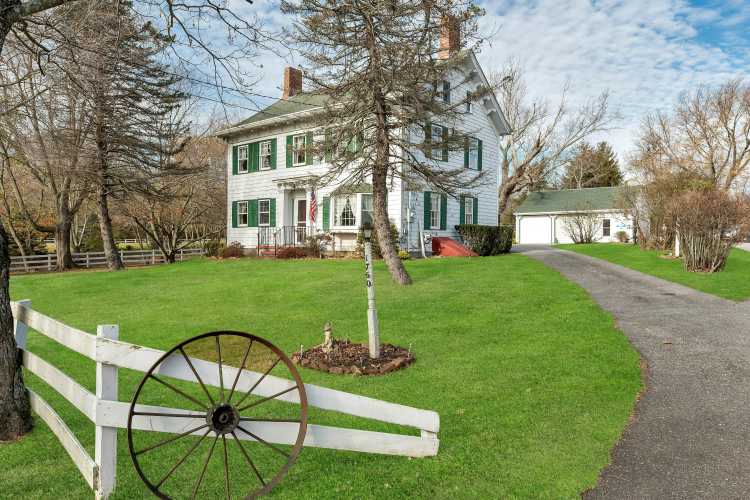
The Plainview Water District, in partnership with the Bethpage and Greenlawn water districts, announced recently that it has submitted a joint proposal for the New York State Center for Clean Water Technology (CCWT) at Stony Brook University’s pilot grant program, Removal of 1,4-Dioxane from Long Island’s Drinking Water.
Although the Plainview Water District reports far lower levels of 1,4-Dioxane than the New York State Department of Health’s (DOH) maximum contaminant level (MCL) for unregulated chemicals including 1,4-Dioxane, the district decided to proactively partner with its neighboring water districts to take advantage of the support that the CCWT’s pilot program provides—thereby making clear its intention to keep water clean in community.
“There is currently no MCL standard or approved treatment method to remove 1,4-Dioxane from our water,” said Plainview Water District board chairman Marc Laykind. “This pilot study will enable a matrix-style evaluation tool to compare the treatment effectiveness of a variety of Advanced Oxidation Processes under varying, key water quality parameters. We are excited to join alongside our colleagues in submitting this proposal as the first of many steps to ensure the quality of our water.”
1,4-Dioxane is a synthetic chemical used as a solvent and a chlorinated solvent stabilizer for industrial chemicals. It is used in a variety of applications such as inks and adhesives. Its presence extends far beyond drinking water and is pervasive in everyday household products at much higher levels, including cosmetics, shampoos, detergents and deodorants. There is currently no chemical-specific Federal or New York State drinking water standard for 1,4-Dioxane.
Bethpage Water District Superintendent Michael Boufis said that it is important to stay ahead of the curve when it comes to treating water contaminants.
“Together with the Plainview and Greenlawn water districts, we put together a strong application for this pilot program and made a compelling case to show why we are collectively the right water providers to partner with on this initiative,” he said. “We are hopeful we will be granted the opportunity to shape the future of treating 1,4-Dioxane.”
With the high probability that New York State will establish a state-wide drinking water standard specific to 1,4-Dioxane, water district officials believe it is essential that public water suppliers on Long Island find a cost-effective treatment system for this contaminant that is not readily removed, if at all, by traditional treatment methods that Long Island water suppliers currently employ.
In order to accomplish this goal, a significant amount of research and development must be completed within a very short period of time—this is why the Plainview Water District is partnering with other organizations as a much needed step toward ensuring high quality drinking water.
“Programs such as the CCWT’s pilot program are necessary to propel the industry forward and find meaningful, lasting solutions to these types of contaminants,” said Plainview Water District Commissioner Amanda Field. “We are excited to be one of the leaders in this endeavor and introduce a new form of water treatment technology to Long Island that will help shape and improve the future of to our drinking water.”
Superintendent Stephen Moriarty said the water district has always taken a proactive approach to testing and reporting on potential emerging contaminants, and 1,4-Dioxane is no exception. The district volunteered to conduct a repeat sampling of Long Island drinking water since initial testing in 2014 and found levels of 1,4-Dioxane to be significantly lower than the NYSDOH Unspecified Organic Contaminant standard.
“We are always looking for ways to improve services and the quality of our water while simultaneously reducing costs,” said Moriarty. “The application we submitted is a grant-based program and there will be no added costs to the district other than providing samples from our wells for testing.”
—Information provided by the Plainview Water District
































